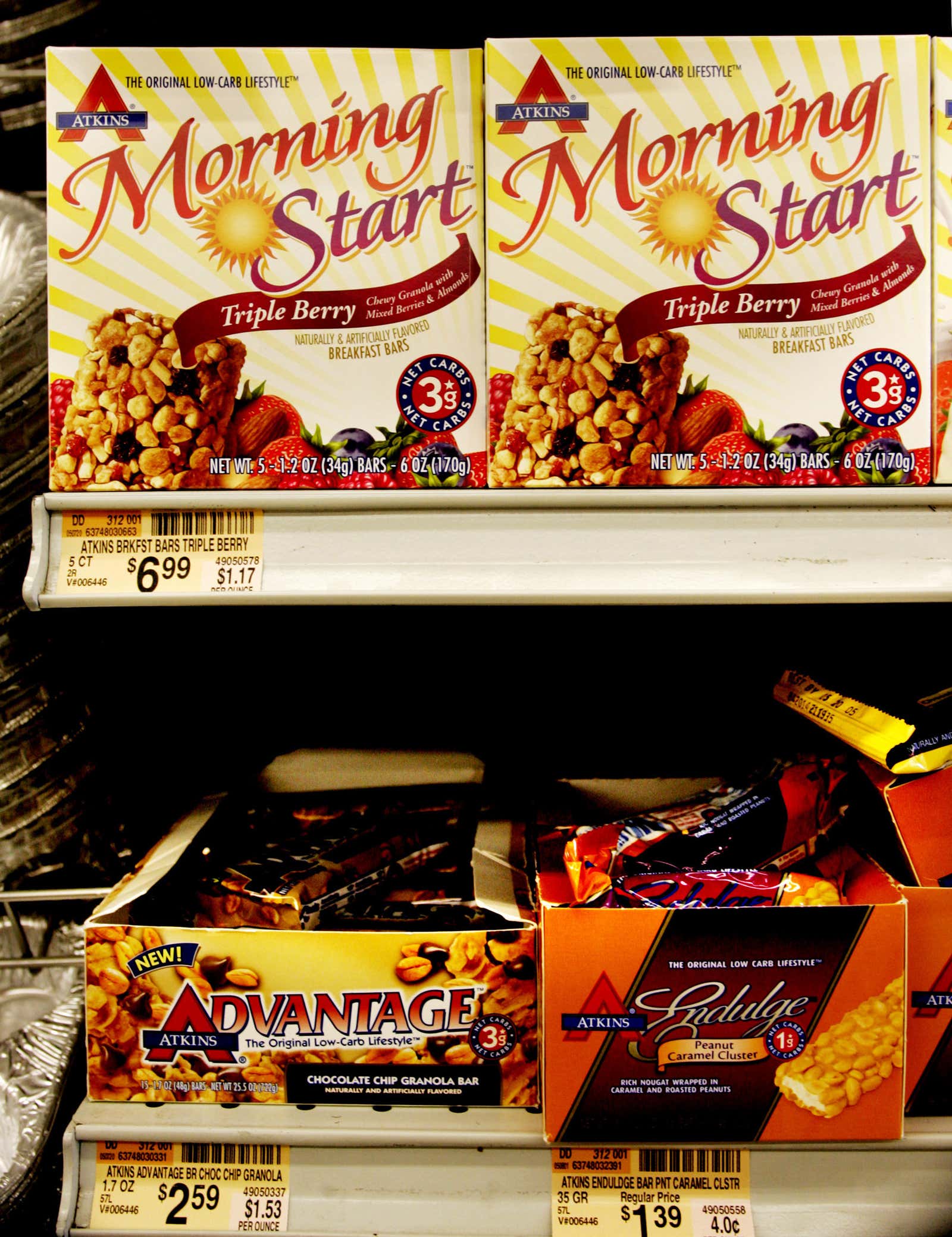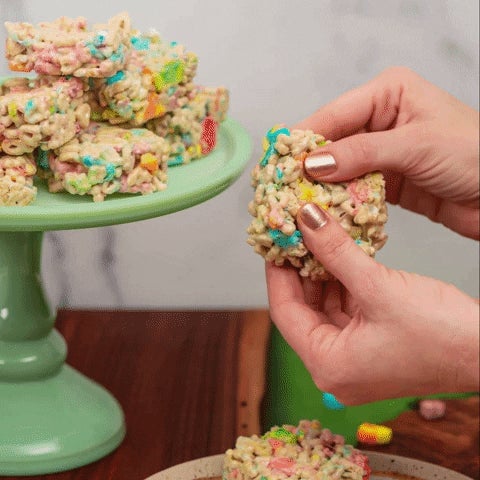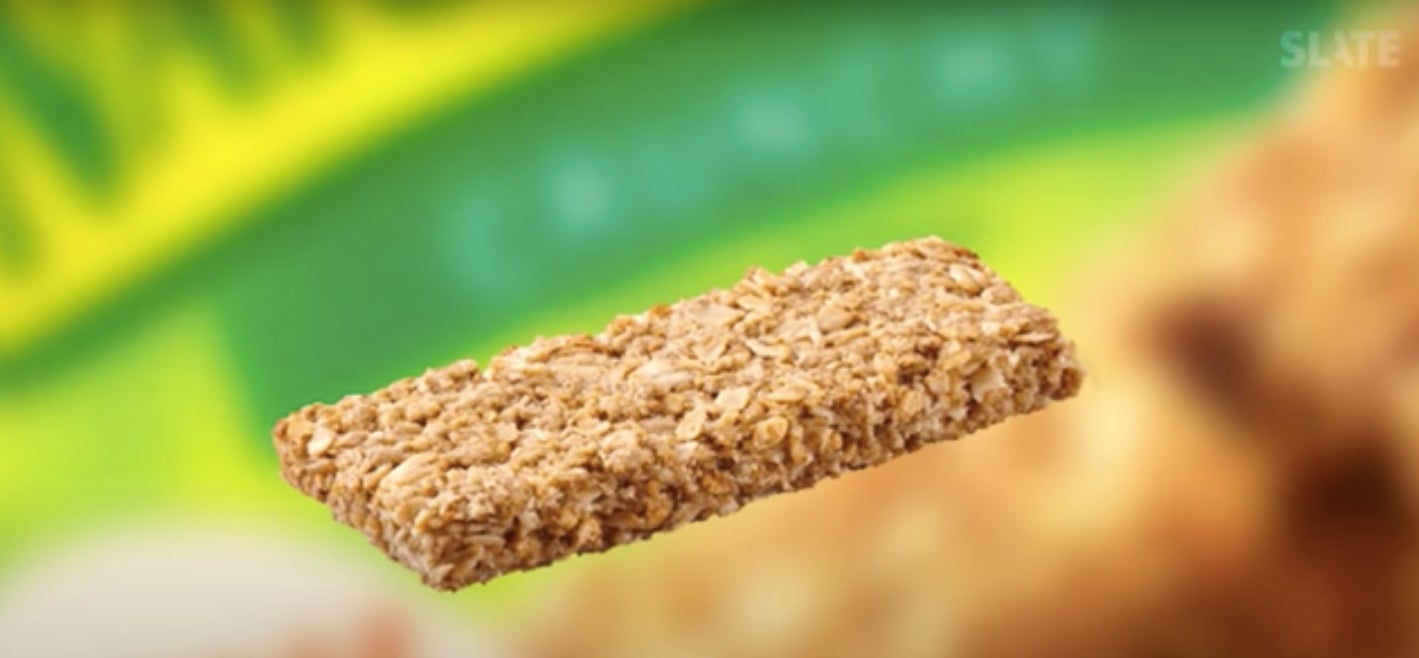Granola bars: The crunch of consumerism
Crumbles for the masses

Crumbles for the masses
Suggested Reading
In 1969, several hundred thousand people found themselves in an exhausted haze of dancing, acid trips, and acute hunger. They’d been holding down spots in front of the stage at Woodstock for more than 24 hours, and hadn’t eaten a bite of food, partly on their own volition, and partly because the event was experiencing food shortages. Then, paper cups appeared, and they were filled with granola.
Related Content
The seminal music and counterculture event cemented the stereotype that hippies eat granola. But the granola that hippies ate at Woodstock was probably closer to the traditional kind—baked rolled oats and graham flour—and comparatively much healthier than the sugary bars of chocolate-coated grains mixed with dried fruit and nuts on shelves today.
How did granola go from a powerful, hippie-sobering snack to perfectly packaged confectionary rectangles with lucrative, mostly deceptive, marketing?
Let’s crunch some ideas.
By the digits
$377.3 million: US granola bar sales in 1985
$722.2 million: US sales of just the top granola bar vendor (Clif Bar & Co.) in 2021
0.45: Parts per million of glyphosate, an herbicide, found in a Nature Valley granola bar, complicating its “all-natural” marketing
100%: How “natural” Nature Valley claimed its oats were before dropping the description from its marketing in 2018 after a lawsuit over glyphosate
230: Calories in a peanut butter Nature Valley bar
230: Calories in a Kit Kat bar
Origin story

From GOAT to just oat
Granola as a concept has been around for more than 150 years. Back in 1863, Dr. James Caleb Jackson created the first granola, called granula, by smushing up graham flour and baking it. It wasn’t until the 1970s that the stuff became a portable, bar-shaped snack, an evolution that’s often credited to serial inventor Stanley Mason.
But while around 70% of Americans think granola bars are healthy, only a third of nutritionists agree. Where did this discrepancy come from?
The initial intention was good. The physicians who came up with granola were trying to pack a nutritional punch of fibrous oats and protein-rich nuts into bite-sized morsels for their patients.
Things got flaky when food companies started to get greedy about market share and wanted to expand the appeal of eating dried oats to the masses. Refined sugar, chocolate, and peanut butter made “healthy” taste really, really good. Of course, it didn’t take long for scientists to read food labels, and a recent Tufts University study ranked granola bars less healthy than ice cream.
Listed
The five granola identities
A 2022 study in the National Library of Medicine looked at which different customer segments eat granola bars and why. The five granola bar consumer identities are:
👃 Involved
The involved and health-oriented personalities were more likely to eat bars and see them as nutritious; the frugal and visual folks didn’t eat as many but liked the idea of them; and information seekers got a serotonin boost from the sweetness and crunch.
Fun fact!
Dr. John Harvey Kellogg is likely why we spell granola the way we do. His recipe looked a lot like Dr. James Caleb Jackson’s granula, but he called it granola to avoid a lawsuit. And while you may think John Harvey Kellogg is the name behind Kellogg’s food company, that’s actually his brother, W.K. Kellogg. They both were super into cereal and made a health food company together, but a feud over corn flakes led W.K. Kellogg to branch out on his own.
Pop quiz

Which country is the world’s largest oat producer?
A. China
B. US
C. Russia
D. Canada
The answer at the bottom of this email, in a pile of oaty, coconuty dust.
Explain it like I’m 5
Snack nation
Americans started becoming big snackers in the 1950s. A couple factors were at play: Farms in the US were becoming more centralized, and food manufacturing more industrialized.
Quickly, food manufacturers found out they could crank out tins of potato chips, slap some misleading branding on them—cans of New Era potato chips labeled them a “healthy food”—and meet a demand for snacks that satisfied cravings from coast to coast.
America has come a long way in nutritional food labeling since the 1950s, but branding remains as important as ever. The granola bar has taken on many personalities since its creation (power bar, energy bar, protein bar), all in marketers’ quest to part ways with its junk food stereotype and align it firmly with an active, health-conscious consumer. And for the most part, it has worked.
Quotable
“Breakfast in bed for 400,000.”
—Wavy Gravy, a West Coast commune founder whose real name is Hugh Romney, announcing the arrival of granola at Woodstock
Take me down this 🐰 hole!
The snack instinct
In a way, granola bars are valued for similar reasons—quick calories that require no cooking—but the pandemic threw a wrench into that when people stopped moving around as much. A lack of need for on-the-go snacks sent granola bar sales in a tailspin during the pandemic, and they’re only just starting to recover.
Watch this!

How to eat a Nature Valley granola bar
Nature Valley granola bars are notorious for bursting into a mess of dry crumbs immediately upon removal from their packaging. The kicker is that General Mills, the maker of Nature Valley, actually likes it that way (video) and definitely wants you to keep up posting the free ads, er, memes.
Poll

Which granola bar identity are you?
- I’m so health-oriented I make my own granola bars
- I’m visual and live vicariously through the Clif Bar rock climber
- I seek information from my friends by threatening them with Nature Valley dust
💬Let’s talk!
In last week’s poll about Havana syndrome, 68% of you said you enjoy microwaves in the responsible way (that is, to heat up food).
Today’s email was written by Morgan Haefner (prefers muesli), and edited and produced by Annaliese Griffin (would rather have an ice cream cone).